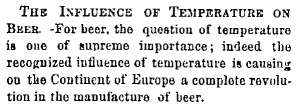
Today’s trash is tomorrow’s treasure, and nowhere is this truism more applicable than in the field of culinary anthropology: if you don’t take your bottles out quickly, they’ll soon form a big, stinking mess. But if you wait long enough, that pile of recycling could become a priceless collection of art, as well as a storehouse of historical information about the way we live and what we consume. This, effectively, is what happened at the Salesian Beer Museum in Prague.
Properly known as the Salesians of Don Bosco, the Salesians are a Roman Catholic religious order known for their work with young people, running community centers and outreach programs around the world. In Prague, they have a youth center at Kobyliské náměstí, a beautiful functionalist complex housing a theater, soccer fields, basketball courts, a climbing wall and rehearsal spaces for young musicians. In the middle of all this is the Salesian Beer Museum, an almost accidental collection of historic bottles, labels, openers, cans and beermats from the Czech Republic and around the world.
Due to a growing interest in breweriana, I made an appointment to visit the collection last week. I was shown around by Brother Antonín Nevola, the center’s director and the founder of the museum.
Read More













